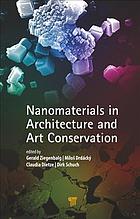Product desciption
Nanomaterials In Architecture And Art Conservation Dietze Claudia Drdck by Dietze, Claudia; Drdácký, Miloš; Schuch, Dikr; Ziegenbalg, Gerald 9780429428753, 9789814800266, 0429428758, 9814800260 instant download after payment.
The conservation and protection of buildings that constitute our cultural heritage are complex tasks calling for a comprehensive knowledge of the historical background of the buildings, as well as the construction technologies and materials used. 'Nanomaterials in Architecture and Art Conservation' gives a comprehensive overview of the state of the art of using nanomaterials in conservation sciences, mainly for stone, mortar and plaster strengthening, but also for the consolidation of wall paintings. The book compiles and details deterioration mechanisms of stone and historical mortars, as well as methods of characterising and testing consolidation effects. The non- or semi-destructive characterisation methods that will be presented allow additional measurements to characterise objects before and after any interventions. Besides, general aspects of inorganic consolidants are targeted. The focus, in particular, is the application of nanolime as a new consolidation agent. Basic characteristics and application advices as well as beneficial combinations with other consolidation agents, such as silicic acid esters, are emphasised. What makes this book so special is the large number of practical applications described from the viewpoint of different restorers, offering a direct inside view of the procedure for the conservation of historical monuments. Restorers dealing with stone, mortar and plaster conservation; artists; advanced undergraduate- and graduate-level students of conservation science, art and nanotechnology; offices for the protection of monuments and heritage agencies; and researchers in materials science, conservation, nanotechnology and chemistry, especially those with an interest in applied sciences, will find this book a great reference.
Abstract: The conservation and protection of buildings that constitute our cultural heritage are complex tasks calling for a comprehensive knowledge of the historical background of the buildings, as well as the construction technologies and materials used. 'Nanomaterials in Architecture and Art Conservation' gives a comprehensive overview of the state of the art of using nanomaterials in conservation sciences, mainly for stone, mortar and plaster strengthening, but also for the consolidation of wall paintings. The book compiles and details deterioration mechanisms of stone and historical mortars, as well as methods of characterising and testing consolidation effects. The non- or semi-destructive characterisation methods that will be presented allow additional measurements to characterise objects before and after any interventions. Besides, general aspects of inorganic consolidants are targeted. The focus, in particular, is the application of nanolime as a new consolidation agent. Basic characteristics and application advices as well as beneficial combinations with other consolidation agents, such as silicic acid esters, are emphasised. What makes this book so special is the large number of practical applications described from the viewpoint of different restorers, offering a direct inside view of the procedure for the conservation of historical monuments. Restorers dealing with stone, mortar and plaster conservation; artists; advanced undergraduate- and graduate-level students of conservation science, art and nanotechnology; offices for the protection of monuments and heritage agencies; and researchers in materials science, conservation, nanotechnology and chemistry, especially those with an interest in applied sciences, will find this book a great reference


